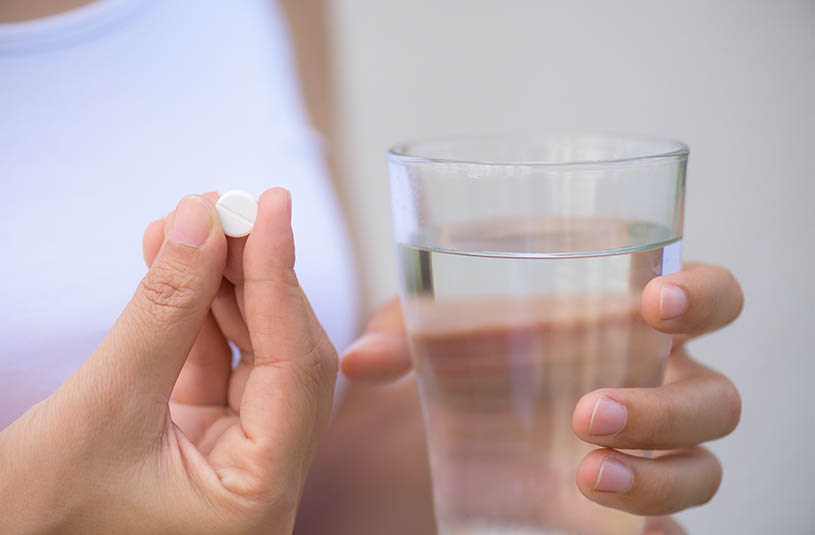Lunesta is a medication that is popularly recommended to treat patients with sleep disorders. It is available in tablets and its highest dose is 3mg. Its generic name is Eszopiclone and it belongs to the sedative-hypnotic drug class. Sedative-hypnotic drugs help patients who suffer from insomnia by reducing brain activity. So, how long does Lunesta last? Lunesta half life is six hours and should be out of the system between 24-48 hours after intake. However, many factors might affect the duration and elimination of the drug.
Table Of Contents:
Dosage, age, and diet can lead to differences in excretion. Note that liver and renal problems can also influence the medicine and its effects. The medication can be habit-forming so it is advisable to seek medical advice before administering to avoid negative health consequences. This article will discuss the medicine’s mechanism of action, the time it takes for the medication to work, and how to safely excrete the medication. Read on to discover the drug testing information of Eszopiclone.
Lunesta Half Life
The half life of a medicine is defined as the period it takes for the concentration of a drug to reduce by half (50%) in the body. A drug’s half life is usually factored in when trying to determine the safest time to stop taking the medicine, probably after addiction or overdose, or because of the possible drugs and substances interactions. Usually, the strength of the medicine , its duration, and half life help medical doctors to know when and how to wean off people who use certain drugs. This is because quitting a drug abruptly can cause withdrawal symptoms. It is therefore important to have a medical doctor supervise a user’s withdrawal. Lunesta half life is around 6 hours. However, in elderly people (65+), the Lunesta half life can be as high as 9 hours.
How Long Does Lunesta Stay In Your System?
Eszopiclone belongs to the Schedule IV drugs classification which means it can be habit-forming. This has led to the FDA’s introduction of new regulations that demanded the lowest dose of the medicine be lowered to 1 mg. In general, Eszopiclone doesn’t accumulate in a once-daily dose intake. This sleep medicine works fast and is eliminated quickly. However, people who use the medicine might need between 1 or 2 days to get clean.
How Long Does Eszopiclone Stay In The Blood?
Blood tests are not standard when it comes to Eszopiclone. However, note that the peak plasma concentrations occur within an hour after intake. Therefore, it is possible that Eszopiclone can show up in a blood test, one hour after taking it. Nevertheless, no need to worry as most jobs won’t test for Eszopiclone since it is not part of a standard test. To be on the safer side people who use the medicine should take the test 48 hours after intake.
How Long Does Eszopiclone Stay In The Saliva and Hair?
Swab and hair tests are not used to detect Lunesta. Even if it is tried, no dose of Eszopiclone can be detected in saliva. It’s interesting to mention that the insomnia medicine leaves some metallic taste in the mouth of the user. Also, have in mind that hair tests usually have a long window of detection (up to 90 days). This is possible because as hair grows, traces of medicines in the bloodstream become part of the hair and are detectable up to 90 days before testing.
How Long Does Eszopiclone Stay In The Urine?
Urine tests are the most common form of drug tests because they’re cheap, painless, and convenient. Urine tests might be used to detect Lunesta. This is because about 75% of the medicine is excreted through urine as metabolites. Do not worry, though, as long as one has a prescription from a medical doctor, it should be okay. Still, as mentioned above, stay at least 2-7 days of clean time before testing. Stay hydrated, follow a healthy diet and eat more acidic foods (grapefruit juice can be helpful).

Lunesta Mechanism Of Action
Eszopiclone belongs to the sedative-hypnotic drug which induces sleep by lowering brain activity. It is derived from the pyrrolopyrazine of the cyclopyrrolone class. There is not enough information on its exact mechanism of action. However, it interacts with GABA receptor complexes at binding sites near benzodiazepine receptors. This explains why the medication produces a calming and sedative effect on the body. The drug can be used both for the short-term and the long-term treatment of insomnia.
How Long Does It Take For Lunesta To Work?
Eszopiclone is orally taken and quickly absorbed. Its peak plasma concentration is achieved within 1 hour after intake. Once it is administered, it takes an average of 10.4 minutes for patients to start feeling its effects. For most users, the medicine can take between 24 – 48 hours to get out of the system. Although it is a fast-acting medicine, patients are normally advised to prepare themselves to sleep. The medication can’t do all the work, it needs help from those who use it as well.

How Is Eszopiclone Metabolized?
The body rapidly absorbs Eszopiclone, and then it undergoes hepatic oxidation and demethylation in the liver by the CYP450 3A4 system. The medicine is excreted in the urine. Note that only around 10% is excreted as parent drug, the rest are eliminated as metabolites. Also, the central metabolites do not bind to GABA receptors. Research indicates that the CYP3A4 and CYP2E1 enzymes located in the liver are responsible for the metabolism of Eszopiclone. In some patients with liver and renal failure, metabolism can be impaired.
This sleep medicine works fast and is eliminated quickly. However, people who use the medicine might need between 1 or 2 days to get clean.

Lunesta Drug Testing Information
Eszopiclone doesn’t stay in the body for long. Though it has a similar chemical structure to benzodiazepines, it will not show up as benzo, contrary to popular speculations. Usually, one’ll need up to 48 hours after taking the drug to get clean. However, some users suggest staying away from the drug a whole week to prior testing. Note that the medication would not show up on most 12 panel tests because they are not designed to detect the drug. It can only show up during a specific Lunesta drug testing apparatus designed to find traces of the medicine.
Eszopiclone Elimination And How To Remove It From The System Safely
Like other drugs, many factors influence the effects Lunesta has on the user. After an oral intake of the drug, about 75% of Eszopiclone is eliminated through the urine as metabolites. Also, because Eszopiclone is a powerful sleeping pill, one should administer the drug with caution and only when she or he can dedicate eight hours to sleep.
Some of the Factors That Might Affect the Duration and Elimination of the Drug Are:
- Dosage – Individual differences, such as age, overall health, and history of drug abuse can affect how long Lunesta does last in the system. For instance, the drug tends to last about 9 hours in people above 65 years. Though the drug is metabolized in the liver, hepatic impairment does not affect the elimination of the medicine. However, people with liver problems should seek medical advice before taking the drug to avoid adverse effects on their health.
- Food intake and exercising – Note that meals rich in proteins and fiber can help one clean the body faster. However, taking the medicine immediately after a heavy meal may affect the effects of the drug on inducing sleep.
Although Lunesta can be useful when dealing with insomnia, remember that the drug can also be habit-forming, hence one may need to look for Lunesta alternatives. If one is struggling with Lunesta addiction, find the best rehab near you here or seek medical attention. Do not forget that exercising, yoga for addiction, and going to bed at the same time every night can help to regulate sleep.
Hope Without Commitment
Find the best treatment options. Call our free and confidential helpline
Most private insurances accepted
Page Sources
- US Food and Drug Administration. (2008). Lunesta (Eszopiclone) Tablets 1mg, 2mg, 3mg. US Food and Drug Administration. https://www.accessdata.fda.gov/drugsatfda_docs/label/2008/021476s005s008lbl.pdf
- B. D. Brielmaier. (2006). Eszopiclone (Lunesta) A New Non-benzodiazepine Hypnotic Agent. US National Library of Medicine: National Institutes of Health.https://www.ncbi.nlm.nih.gov/pmc/articles/PMC1325284/
- A.M Wessell. C.W. Weart. (2005). Eszopiclone (Lunesta) For Treatment of Transient and Chronic Insomnia. American Family Physician. https://www.aafp.org/afp/2005/0615/p2359.html
- J. Hallare, V. Gerriets. (2020). Half-life. StatPearls [Internet]. NCBI. https://www.ncbi.nlm.nih.gov/books/NBK554498/
- S. Tavernise. (2014). F.D.A Recommends Lower Dose of the Sleeping Pill Lunesta. New York Times. https://www.nytimes.com/2014/05/16/science/drug-agency-recommends-lower-dose-of-sleep-aid.html
- Mobile Health. (n.d) What Are The Different Drug Panels? Drug Test Panels: 4 Panel, 7 Panel, or 10 Panel Drug Tests & More. Mobile Health. https://www.mobilehealth.net/employee-screening-drug-respiratory-fit/drug-screening/5-panel/different-drug-panels/
- US National Library of Medicine: National Institutes of Health. (2006). Lunesta (eszopiclone) Tablets. US National Library of Medicine: National Institutes of Health. https://dailymed.nlm.nih.gov/dailymed/archives/fdaDrugInfo.cfm?archiveid=4219




